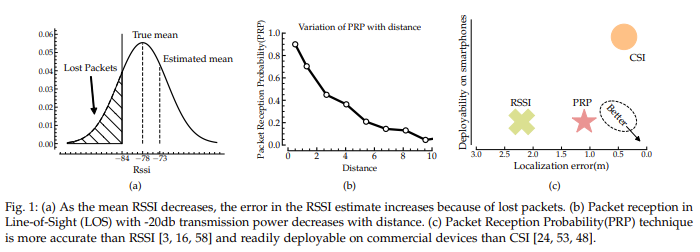There’s new research from the University of Illinois titled Packet Reception Probability: Packets That You Can’t Decode Can Help Keep You Safe (pdf). Many existing systems estimate distance using the Receiver Signal Strength Indicator (RSSI) which is negatively impacted by sampling bias and multipath effects. As an alternative, the study uses Packet Reception Probability (PRP) that utilises packet loss to estimate distance.

Localisation is achieved through a Bayesian-PRP approach that also includes an explicit model of multipath. To facilitate straightforward deployment, there’s no need for any modifications to hardware, firmware, or driver-level on standard devices and only minimal training is required.
A variety of devices were used including Bluvision iBeeks, BluFi, a Texas Instrument Packet Sniffer, a laptop, and Android smartphones (Nexus5x). 60 iBeacons were deployed in a library and 38 in a retail store. The Texas Instrument Packet Sniffer, connected to a Windows laptop was used for packet reception from beacons. Android phones were equipped with a purpose-built Android app.
PRP was found to provide metre-level accuracy with just six devices in known locations and 12 training locations. Combining PRP with RSSI was found to be beneficial at short distances up to 2m. Beyond distances of 2m, fusing the two is less effective than using PRP alone because RSSI becomes de-correlated with distance.